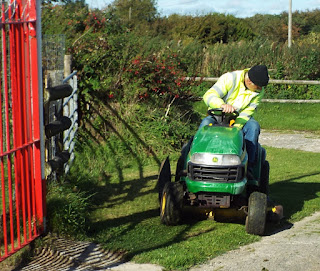Last airfield trip of the season

Thursday saw the last airfield trip of the season. The weather was absolutely glorious and showed Davidstow off perfectly. Marlene will now enjoy a well earned rest until the beginning of July next year. Thank you to Mike for his photos. The visitors on the last tour of the season. Rod, the guide, is behind the lady with the striped top 4th from Marlene, and Chris, the driver, is next to the bus. The tour goes in to the remains of the control tower. Rod giving his talk and answering questions inside the control tower.




